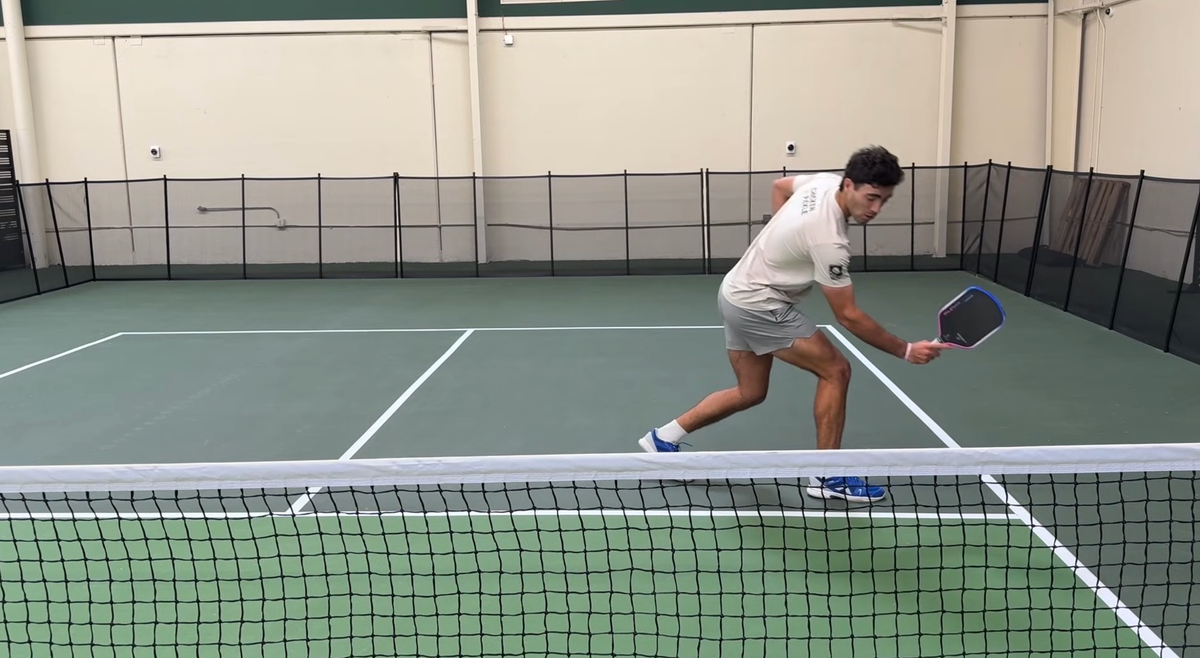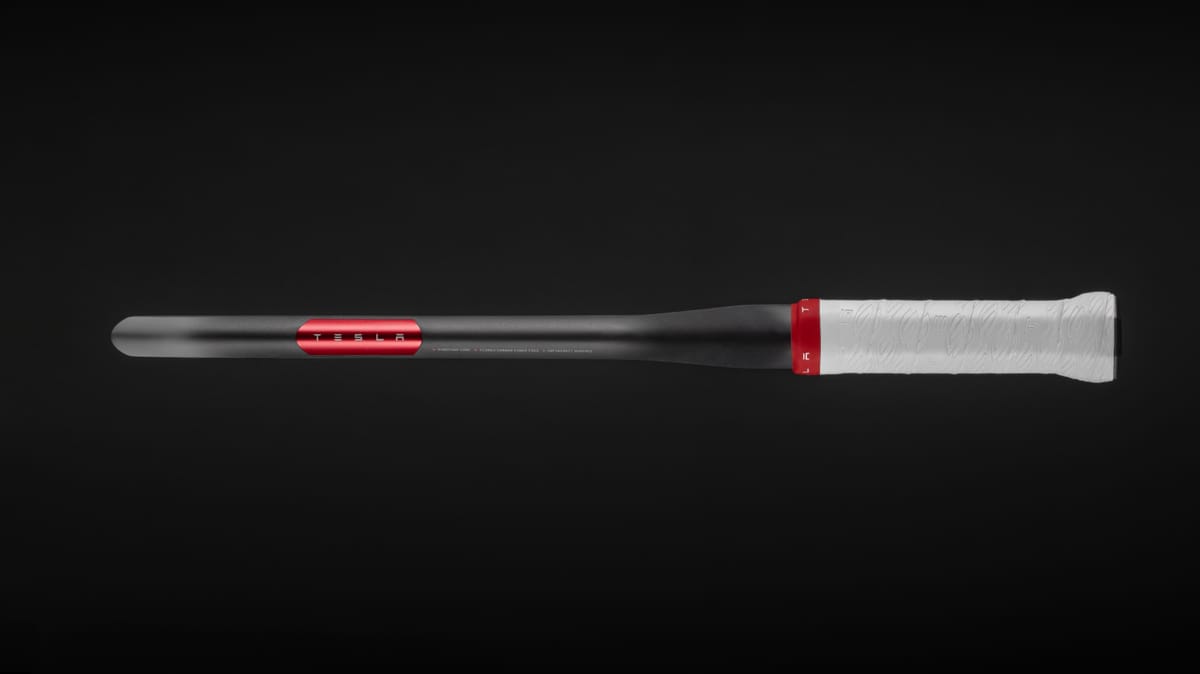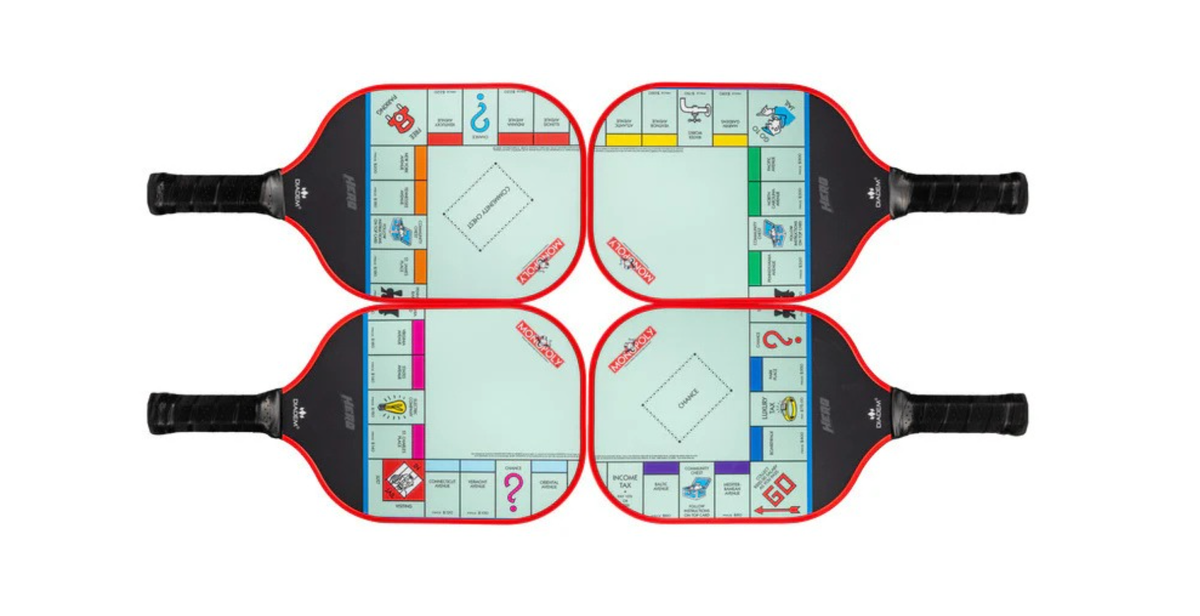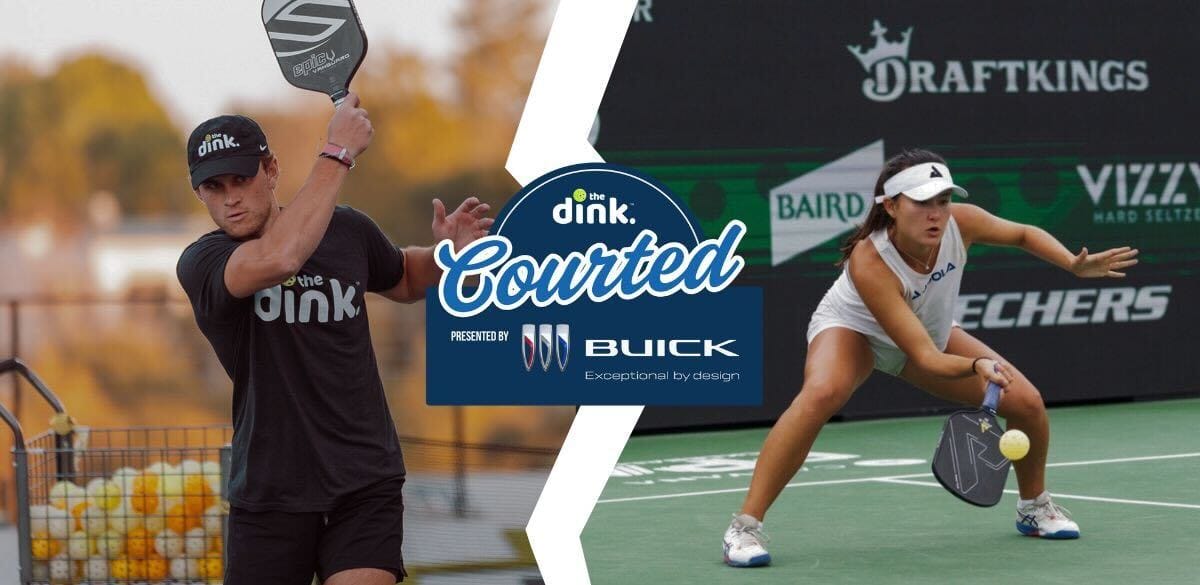While the lob seeks to push players back, the drop shot aims to draw them in, showcasing the strategic depth of pickleball by manipulating opponents’ positioning on the court.
What Are the Key Differences Between a Lob and a Drop shot?
| Aspect | Lob | Drop Shot |
| Purpose | To move opponents away from the net by sending the ball over their heads to the back of the court. | To bring opponents forward by dropping the ball softly into their non-volley zone, forcing them to approach the net. |
| Trajectory | High and deep, with an arc aimed over the opponents’ heads. | Low and short, barely clearing the net to land softly in the kitchen. |
| Intended Outcome | Forces opponents to hit a return shot from a less advantageous position, typically from the baseline or beyond. | Compels opponents to move forward, often resulting in a less aggressive return and potentially putting them in a vulnerable position. |
| When Used | When opponents are positioned close to the net or as a defensive strategy to regain positioning. | To disrupt opponents’ rhythm, especially when they are positioned deep in their court or to transition into net play. |
| Skill Required | Requires control and power to ensure the ball goes deep enough without going out of bounds. | Demands finesse and precision to ensure the ball lands in the desired spot within the kitchen without flying too high. |
| Defensive vs. Offensive | Can be used both defensively, to buy time, or offensively, to exploit poor positioning. | Primarily offensive, aiming to take control of the rally by placing opponents under pressure. |
| Effectiveness Against | Effective against players who prefer net play and may struggle with backcourt shots. | Effective against players who are less mobile or have difficulty with short, soft shots requiring quick forward movement. |
What is Considered a Lob and When to Use It?
A pickleball lob is a strategic shot that sends the ball in a high arc over the opponents’ heads, aiming for it to land deep in the court, preferably close to the baseline. This shot is designed to move opponents away from the net, disrupting their position and forcing them to hit a return shot from a less advantageous position.
There are two types of lobs: the defensive lob and the offensive lob. The defensive lob serves as a crucial defensive shot and is used as a strategic tool to create space and time for pickleball players who are under pressure, allowing them to gain time and reestablish their court position
The offensive lob is executed with more aggression and intent to catch opponents off guard, especially when they are positioned too close to the non-volley zone line, expecting a volley or a dink.
Here’s when to use a pickleball lob shot strategically:
- Against Net Players: When your opponents are positioned aggressively at the net, a well-placed lob can push them back, compromising their offensive stance and giving you control of the net.
- To Create Space: If you find the game is too crowded around the net with volleys and dinks, using a lob can open up the court by forcing players to move away from the kitchen line.
- As a Defensive Tool: When you’re under pressure or out of position, a defensive lob can give you and your partner time to reset your stance and prepare for the opponents’ return.
- To Exploit Weaknesses: If you notice your opponents have difficulty with overhead shots or moving quickly backwards, a lob can be an effective way to exploit these weaknesses.
- In Windy Conditions: The lob can be particularly effective in windy conditions, as the wind can alter the trajectory of the ball, making it harder for your opponents to judge and return the shot accurately.
- For Surprise Attacks: When used sparingly and unpredictably, a lob can catch aggressive opponents off guard, especially if they are expecting a volley, a third shot drop or a dink shot instead.
What does a lob look like in pickleball?
Tips for Effective Lobbing
- Accuracy Over Power: Aim for precision and placement rather than power. Getting the ball to land near the baseline is key.
- Use Disguise: Try to make your lob look like another shot until the last moment to keep your opponents guessing.
- Practice Different Angles: Work on both straight and cross-court lobs to add variety to your pickleball game and increase the difficulty for your opponents to predict and return your lobs.
- Monitor Opponents’ Position: Always be aware of where your opponents are on the court. The best time to lob is when they are too close to the net or when there’s a gap in their defense you can exploit.
It’s a powerful shot that, when executed correctly and at the right time, can shift the momentum of a game in your favor.
How do you defend a lob?
Defending against a lob in pickleball requires quick reaction, strategic positioning, and effective communication (in doubles play). Here are key strategies to successfully defend a lob:
1. Anticipate the Lob
- Stay alert to your opponent’s body language and paddle position, which may indicate a lob is coming. Recognizing the setup early gives you more time to react.
2. Quick Footwork
- The moment you realize a lob is being hit, turn and move quickly towards the ball. Good footwork is crucial. Use side steps or crossover steps to cover ground efficiently while keeping your eyes on the ball.
3. Positioning
- Aim to get behind the ball so you can hit it in front of you. This positioning gives you more control over your return shot and allows you to watch the boundaries of the court.
4. Choose the Right Shot
- Once you reach the ball, decide whether to hit an overhead smash, if the lob is within reach and you’re confident in your ability, or a defensive return if the lob is deep and you’re stretched to the limit. An overhead smash can turn defense into offense, while a defensive return should be aimed deep into the opponents’ court to buy time and reset the point.
5. Use a Backhand If Necessary
- If you can’t position yourself to use a forehand return or an overhead smash, be prepared to use a backhand. Practice backhand returns and overheads to improve your versatility in responding to lobs.
6. Improve Your Overhead Technique
- A strong overhead smash can deter opponents from lobbing frequently. Practice your overhead shots to make them more powerful and accurate.
7. Communication in Doubles
- In doubles play, communicate clearly with your partner about who will take the lob. Usually, the player whose side the ball is landing on will run back to hit it, but sometimes the other player has a better angle or position.
What is Considered a Drop Shot and When to Use It?
A drop shot is a finesse shot that is softly hit so that it barely clears the net and lands in the opponent’s kitchen. It’s a difficult shot that requires precise topspin and control.
The goal of a drop shot is to make the ball drop quickly after clearing the net, forcing the opponent to rush forward to return the ball.
Here’s when to use a drop shot:
- From the Baseline: When you’re at the baseline and your opponents are positioned at the net, a well-executed drop shot can bring them out of their advantageous position, forcing them to hit upwards on the ball.
- During a Groundstroke Rally: In the midst of a groundstroke exchange, introducing a drop shot can change the pace of the game, catching your opponents off guard and making them cover more ground.
- After a Deep Lob: If you’ve pushed your opponents back with a deep lob, using a drop shot when they return to the baseline can keep them moving and prevent them from settling into a comfortable rhythm.
- Against Power Players: Players who prefer powerful, aggressive play may struggle with the finesse required to return a soft drop shot effectively, making it a good strategy to disrupt their game.
- To Exploit Poor Footwork: If your opponent has poor footwork or struggles with moving forward quickly, drop shots can exploit this weakness, forcing them into difficult positions.
Third Shot Drop
The most popular drop shot in pickleball, widely recognized for its strategic importance and effectiveness, is the third shot drop.
It allows the serving team, which starts each point at a disadvantage due to the double bounce rule (the ball must bounce once on each side before volleys are allowed), to move forward into a net position safely. This shot is used after the serve and return, hence the name “third shot drop.”
What does a drop shot look like in pickleball?
Tips for Effective Drop Shotting
- Soft Touch: The key to a successful drop shot is a soft touch. Practice controlling your paddle speed and angle to gently guide the ball over the net.
- Disguise Your Shot: Make your drop shot look like a drive or a different shot until the last possible moment to prevent your opponents from anticipating and moving forward early.
- Placement Over Power: Aim for the ball to land close to the net within the non-volley zone. The closer it lands to the net, the harder it is for your opponent to return it with any power.
- Practice Consistency: Consistency in drop shots can pressure your opponents throughout the game. Practice hitting drop shots from different positions and under various game conditions to improve your accuracy.
- Evaluate Your Opponents: Always assess your opponents’ positioning and readiness. A drop shot is most effective when your opponents are either too far back or not expecting a soft shot.
This shot adds a layer of complexity to rallies, forcing opponents to adapt and often leading to advantageous situations for you to exploit.
How do you defend a drop shot?
Defending against a drop shot in pickleball requires anticipation, quick reflexes, and strategic positioning.
1. Stay Alert and Anticipate
- Keep an eye on your opponent’s paddle movement and body language. A quick change in their motion can signal a drop shot. Being mentally prepared to move forward quickly is key.
2. Positioning
- Adopt a position on the court that allows you to move forward efficiently. Being too far back makes it difficult to reach a well-placed drop shot in time. Try to stay within a range that allows you to cover the kitchen area effectively.
3. Split Step and Quick Reaction
- Use the split step as your opponent hits the ball. This slight jump and landing with feet apart improves your balance and readiness to move in any direction quickly, especially forward to catch a drop shot.
4. Master the Soft Game
- Practice your soft game skills, including dinks and soft volleys, so you can return a drop shot with precision. Often, the best defense against a drop shot is to counter with a soft shot that lands gently in your opponent’s non-volley zone, keeping them on the defensive.
5. Improve Your Footwork
- Work on drills that enhance your forward movement and agility. Being able to quickly close the distance to the net is crucial for reaching drop shots before they bounce twice.
6. Use the Correct Stroke
- Depending on your position and the ball’s speed, use either a volley (if you can reach the ball before it bounces) or a soft groundstroke to lift the ball back over the net. Your return should aim to reset the point, ideally landing softly in the opponent’s kitchen to prevent them from executing an aggressive shot.
7. Communicate in Doubles
- In doubles play, communication with your partner is vital. Quickly decide who will go for the ball to avoid confusion and ensure one of you can effectively return the drop shot.
8. Practice Drop Shot Returns
- Regular practice against drop shots will improve your reaction time and shot selection. Drills that focus on moving forward from different positions on the court to return drop shots can be particularly beneficial.
For players seeking to improve, incorporating these shots into your practice routines can make a substantial difference. Remember, the best pickleball tips often come from analyzing your play and understanding the strategic impact of each shot you choose.
By practicing both the lob and the drop shot, you can keep your opponents guessing and off-balance, making these techniques not just effective shots but game-changing strategies.
How useful was this post?
Click on a star to rate it!
We are sorry that this post was not useful for you!
Let us improve this post!
Tell us how we can improve this post?
Anuncie Aqui / Advertise Here
Sua marca para o mundo Pickleball! / Your brand for the Pickleball world!

 English
English  Spanish
Spanish  Portuguese
Portuguese  German
German  Italian
Italian  Japanese
Japanese  French
French  Polish
Polish  Russian
Russian  Netherlands
Netherlands  Hungarian
Hungarian  Turkish
Turkish  Videos
Videos  Pickleball Union
Pickleball Union








 English (US) ·
English (US) ·  Portuguese (BR) ·
Portuguese (BR) ·